Wild Kingdom – Monarch Butterflies
Landscaping for the Wild Kingdom– Here’s a small segment on how to attract monarch butterlies to you garden. We’ll worry about attracting hummingbirds, snakes, rodents, and mountain lions at a later date. To attract monarchs, you have to have something they like and something the caterpillars can eat so they can fatten up making it to both the chrysalis stage and then on to the butterfly. You also have to have something for the monarch butterflies to eat, nectar. If you have milkweed and nectar plants you’re in business. And they do like a little water too-small dish maybe.
They love milkweed both as a nectar plant and the only place they lay their eggs for the soon to be caterpillars, and there are several types. The one they seem to like the best is the narrow leaf milkweed or Asclepias facicularis. This type of milkweed won’t normally help you win a garden contest unless monarchs are doing the judging. How many milkweed plants do you need? Well, you need to buy an amount to reach “critical mass”. Meaning they’re have to be enough milkweed plants for the monarchs flying around to see them and have enough food for the caterpillars to eat or they’ll just fly on by. So, consider a dozen milkweed plants or more and you should get some “action”.
The monarchs will start coming to your garden in April, although we see most of the caterpillar action at the nursery in late July. You’ll have several generations in your garden ending in late fall. That’s when the last generation “over winters”. On the west coast, the over wintering appears to be from the SF Bay area to northern Baja-coastal.
Now that you have some milkweed in your garden, what are the monarchs going to eat so they can stick around and lay eggs? The monarchs need nectar. A “few” easy ones to grow that will do the job are Eriophyllum confertiflorum (golden yarrow), monardella odoratissima (mountain mint), and Verbena lilacina ‘De la Mina. Take a look:
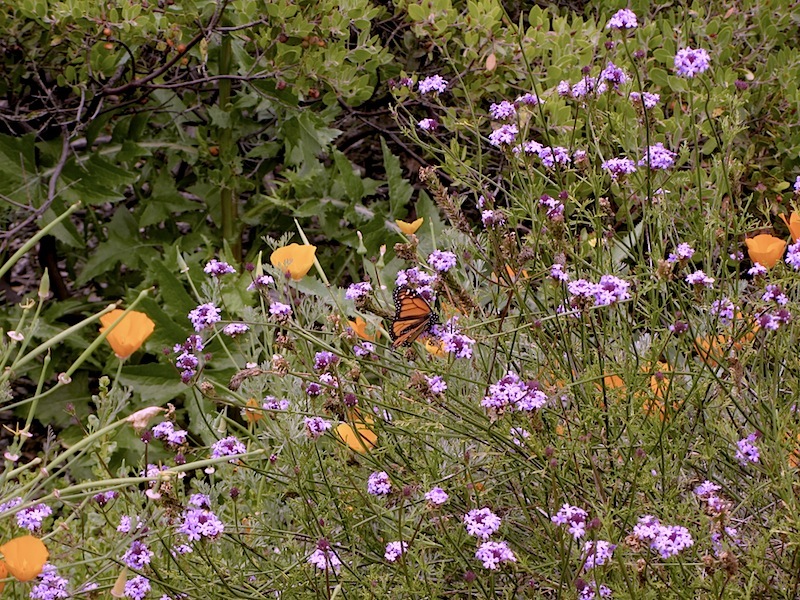
This is the Verbena-which is very ornamental, fragrant, and flowers just about all year.
Here are a few pictures of what you will be seeing if the monarchs do “their thing”. This is all good stuff too.
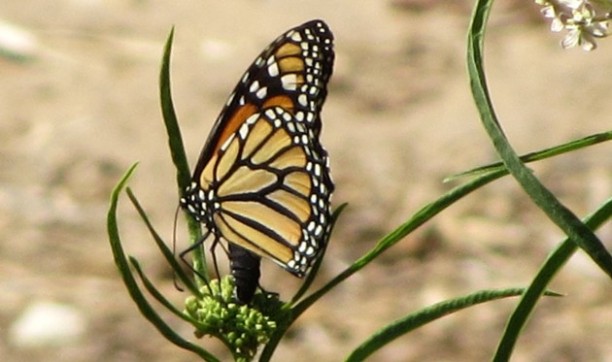
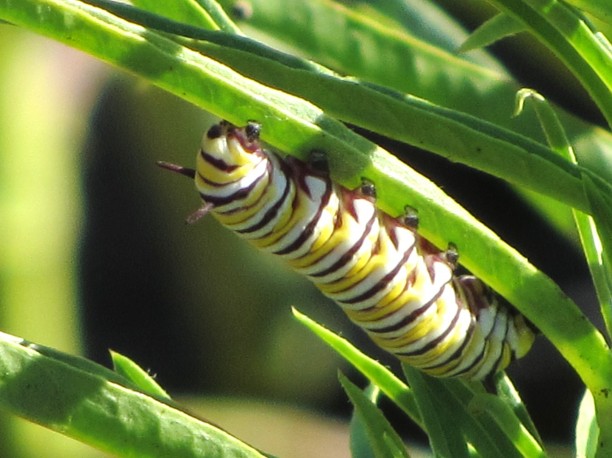
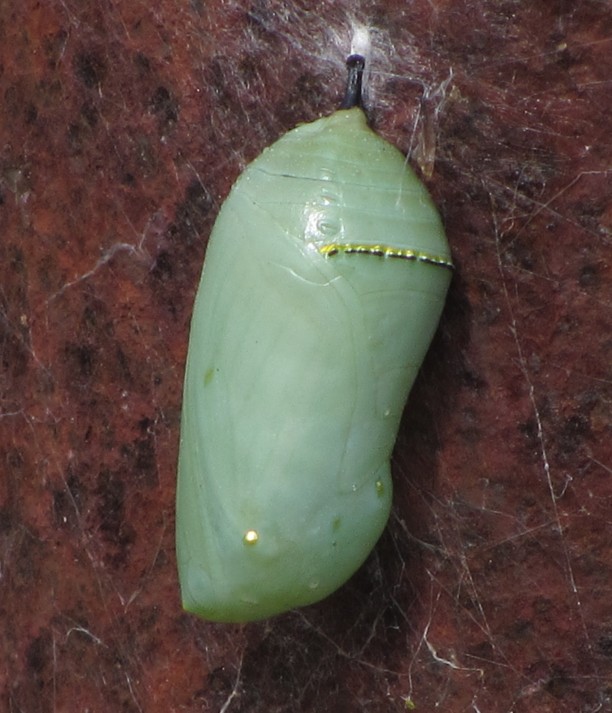
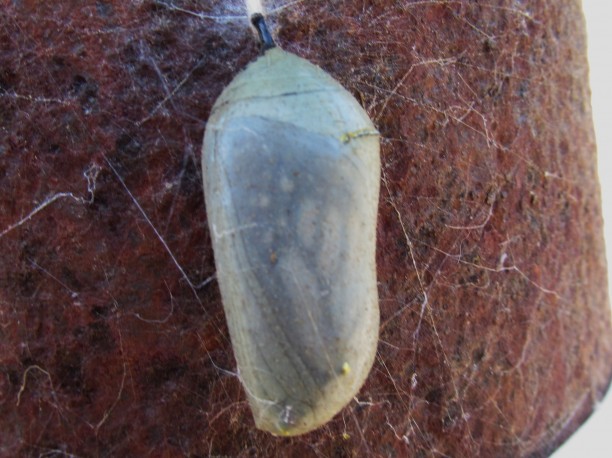
These are pretty much the 4 stages of live action: 1) monarch laying eggs 2) caterpiller eating the milkweed 3) chrysalis 4) chrysalis about the hatch-note the outline of the wings becoming clear. For more info. please go to : http://www.monarch-butterfly.com/
